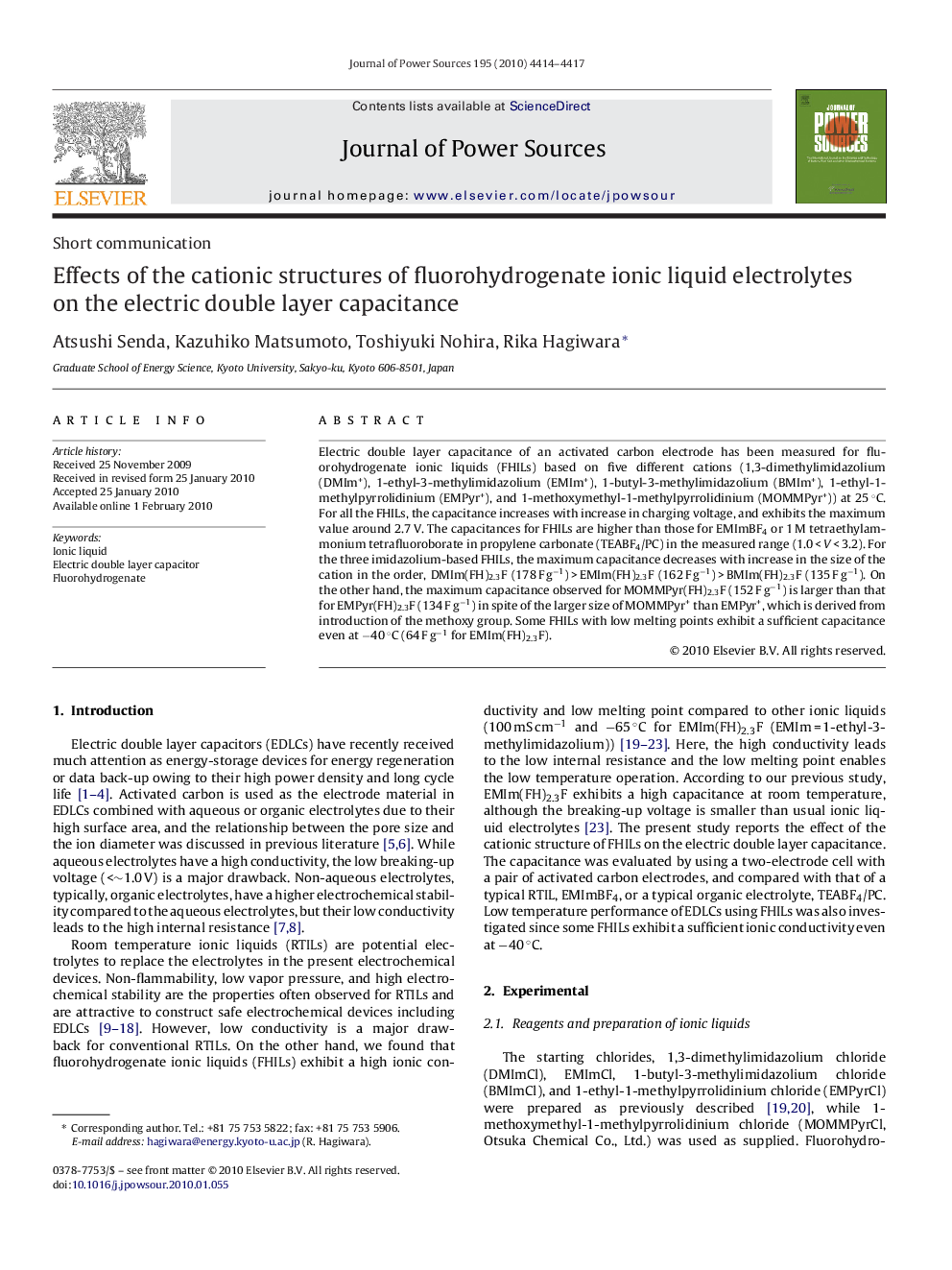| Article ID | Journal | Published Year | Pages | File Type |
|---|---|---|---|---|
| 1290383 | Journal of Power Sources | 2010 | 4 Pages |
Electric double layer capacitance of an activated carbon electrode has been measured for fluorohydrogenate ionic liquids (FHILs) based on five different cations (1,3-dimethylimidazolium (DMIm+), 1-ethyl-3-methylimidazolium (EMIm+), 1-butyl-3-methylimidazolium (BMIm+), 1-ethyl-1-methylpyrrolidinium (EMPyr+), and 1-methoxymethyl-1-methylpyrrolidinium (MOMMPyr+)) at 25 °C. For all the FHILs, the capacitance increases with increase in charging voltage, and exhibits the maximum value around 2.7 V. The capacitances for FHILs are higher than those for EMImBF4 or 1 M tetraethylammonium tetrafluoroborate in propylene carbonate (TEABF4/PC) in the measured range (1.0 < V < 3.2). For the three imidazolium-based FHILs, the maximum capacitance decreases with increase in the size of the cation in the order, DMIm(FH)2.3F (178 F g−1) > EMIm(FH)2.3F (162 F g−1) > BMIm(FH)2.3F (135 F g−1). On the other hand, the maximum capacitance observed for MOMMPyr(FH)2.3F (152 F g−1) is larger than that for EMPyr(FH)2.3F (134 F g−1) in spite of the larger size of MOMMPyr+ than EMPyr+, which is derived from introduction of the methoxy group. Some FHILs with low melting points exhibit a sufficient capacitance even at −40 °C (64 F g−1 for EMIm(FH)2.3F).
